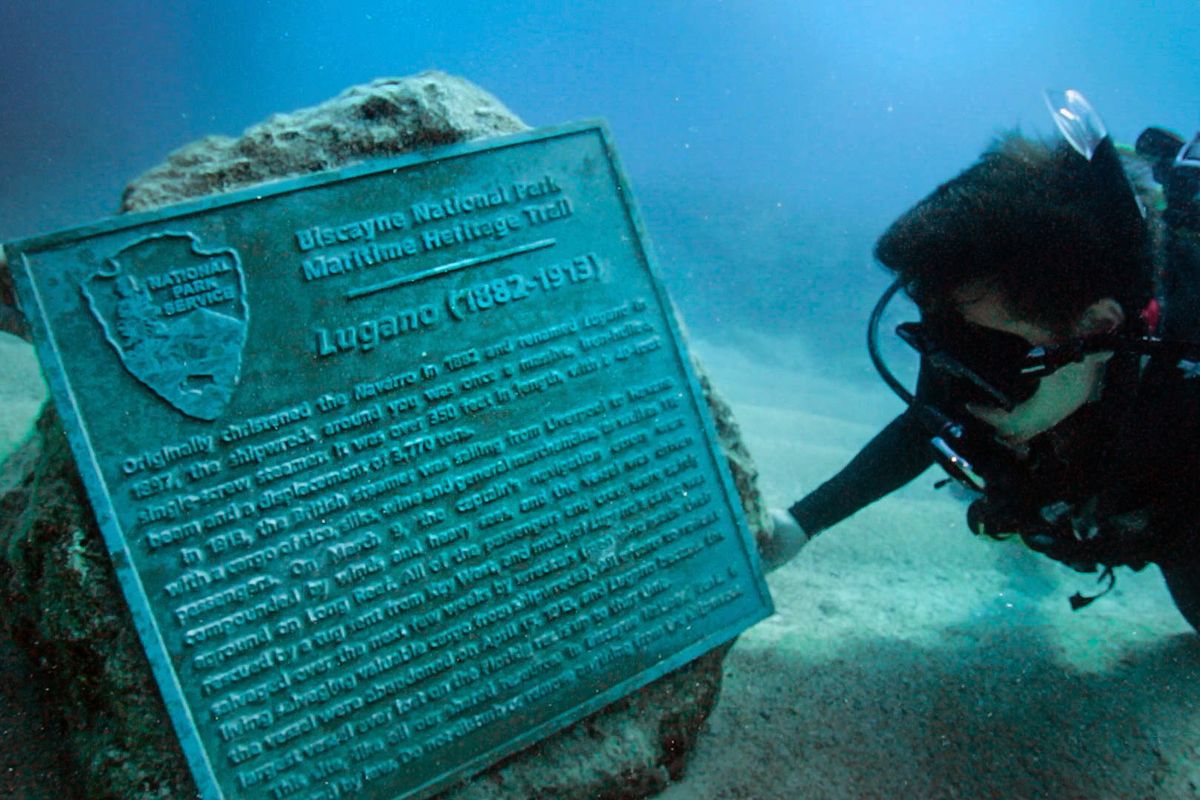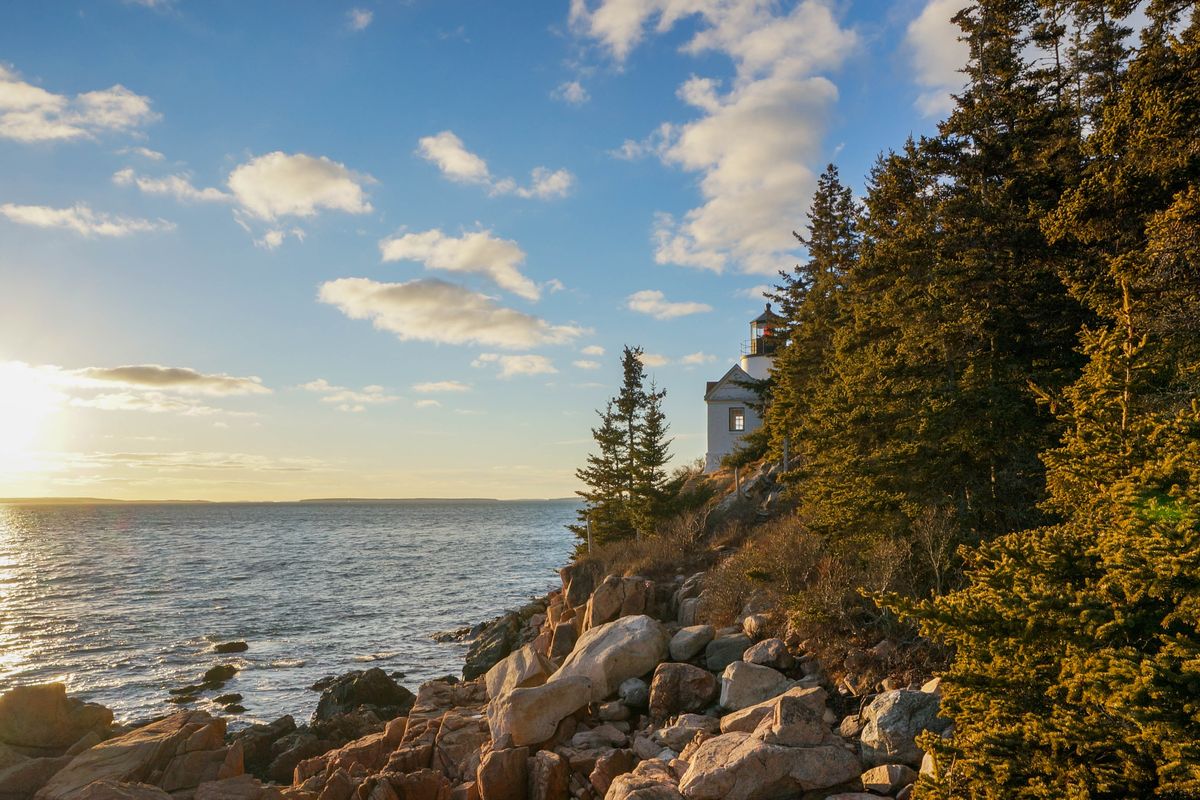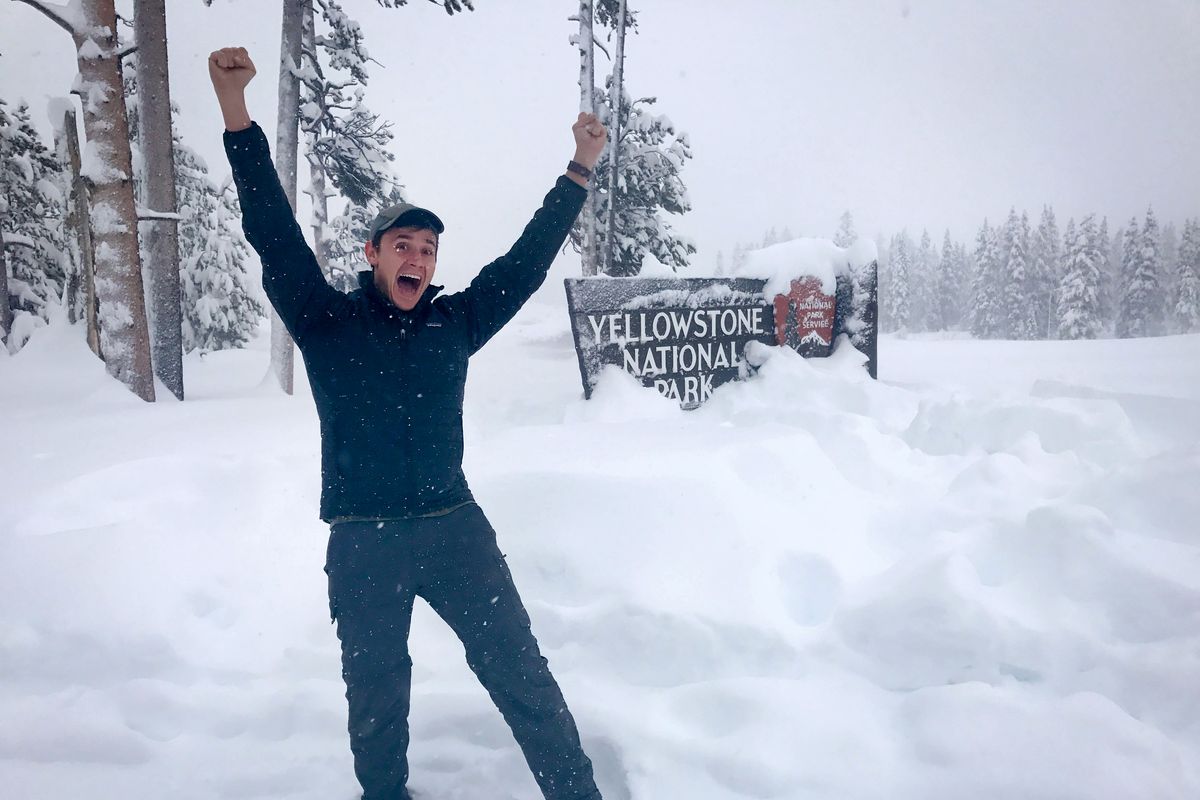Tips for visiting U.S. national parks from someone who visited them all
The Bass Harbor Head Lighthouse in Maine’s Acadia National Park, where Conor Knighton started his journey. (Conor Knighton)
Most people mend a broken heart by bingeing on ice cream or rom-coms. Not Conor Knighton. After his fiancee called off their wedding, he embarked on a national parks bender, visiting all 59 sites in 2016, the centennial year of the National Park Service.
At the time, the 35-year-old West Virginian was freelancing for “Sunday Morning,” and the CBS show aired a handful of his “On the Trail” segments from the field – petrified forest, sand dunes, active volcano, etc. For the remainder of the material, he traded in his video camera for a pen. In his book, “Leave Only Footprints: My Acadia-to-Zion Journey Through Every National Park,” published this spring, he organized the parks not by geography or chronology but by theme, such as mystery, food, diversity, forgiveness and, of course, love.
“I wanted a national park kind of love … ” he writes at the end of Chapter 18. “Something that felt like it was worth guarding and protecting forever.” As it happened, the publication of his book in the opening months of the pandemic coincided with a surge of interest in the nation’s outdoor spaces.
We recently caught up with Knighton, who is now a “Sunday Morning” correspondent and based (for this minute) in Seattle. He discussed his epic adventure, plus winter travel in parks with built-in social distancing.
Did you grow up visiting national parks?
I didn’t visit my first national park until I was 14. It was my first time on an airplane. We visited Grand Canyon, Bryce Canyon, Zion National Park. For a kid from West Virginia, I might as well have been flying to Mars.
How many parks had you explored before your yearlong tour?
Maybe six or seven. It took seeing all the national parks to visit the one closest to my apartment in Los Angeles – Channel Islands National Park. It was maybe an hour from where I had been living for 10 years, but because it required a boat ride, it wasn’t on my radar. It felt like more of a production than it actually ended up being.
Were you familiar with most of the parks in the NPS?
When I looked at the list, I was surprised by how many I had never heard of. Kobuk Valley in Alaska? Great Sand Dunes in Colorado? That’s what piqued my interest to see them all: realizing not only how many I had not seen but how many I did not know existed.
Why did you take on this particular challenge?
The catalyst was a shake-up in my personal life. At the time, I was in a self-imposed self-quarantine. I was moping around the house trying to heal a broken heart. I was engaged, and when that engagement was called off, I felt adrift. My friends told me I needed to get back out there, I needed a change of scenery. I am sure that visiting every national park in the country was not what they had in mind. But it felt like the right thing for me at the right time.
Why did you focus on the national parks and not other sites run by the NPS?
The National Park Service manages well over 400 scenic rivers, lakeshores, battlefields and historic parks, but the national parks are created by an act of Congress. They tend to be more of the marquee spots that you might plan a vacation around. At the time there were 59, and now there are 62.
How did you plan a trip that covered 29 states and two territories?
It ended up being this weird puzzle of weather, geography and story selection. The Devils Hole pupfish in Death Valley National Park in California is one of the rarest fish in the world. Fish-counting day is one day a year, when (a team of aquatic ecologists) strap on scuba suits and go find out how many pupfish exist in the world. I wanted to be there on that day. I frequently found myself crisscrossing the country. I interviewed the secretary of interior (Sally Jewell) at Mount Rainier National Park (in Washington state) on the one day she was available and then high-tailed it back to Great Smoky Mountains National Park (in Tennessee and North Carolina) to tell the story of these cemeteries in the mountains that ancestors can visit once a year. To even call it a plan is being generous. I did not have an itinerary.
What were the first and last places you visited?
I began with the first sunrise in the United States at Cadillac Mountain in Acadia National Park in Maine. I knew that it was going to be a busy year, and I wanted a head start even if it was only by a couple of seconds. I hiked at 3:30 in the morning to see the sunrise. I was surprised to see other folks there. I think if you go on Jan. 2, you will have it to yourself. I decided to finish at Point Reyes National Seashore in California, where, on New Year’s Eve, the sun sets last. By doing that, I had the longest year you could possibly have in the contiguous United States. Point Reyes isn’t a national park, but, in a way, it was fitting because it reminded me of how much more there is to explore. My final park was Yellowstone a few weeks earlier.
Is visiting all of the parks in a year feasible for the average traveler?
Seeing them in a lifetime is a much more reasonable goal.
Any parks really stand out?
Biscayne National Park in Florida is 5% land and 95% water. If you stand at the visitor center and look at the water, it looks like a lot of South Florida. Once you’re out on the water, the features of the park really reveal themselves to you. I went on an underwater trail. To do that, I got scuba certified a few days ahead of time. I dove from shipwreck to shipwreck. At the bottom of the ocean, they have the same type of interpretive park signs you might see on the side of a trail in the Great Smoky Mountains. Great Sand Dunes National Park is one of the quietest places in the country.
The scenery is very impressive, but the stillness and the quiet – that is what stayed with me. The sand deadens the sound. You’re hearing conversations from hundreds of feet away. You’re hearing your heartbeat. Great Basin National Park in Nevada would also be high on that list. It has some of the darkest night skies in the country. The park has done a great job of protecting its night skies by enforcing restrictions on the lighting. They have “dark rangers,” which is one of my favorite jobs in the park service. It sounds like a superhero.
What larger lessons did you learn?
I knew the parks would be beautiful; I was surprised by how interesting they were. I saw them during what felt like the most divisive year in America’s politics, but the parks are places where people can come together. They’re in red states and blue states. They are universally loved. (The trip) also exposed me to the challenges the parks are facing, from overcrowding to climate change. Where that really hit home for me was seeing the disappearing glaciers at Glacier National Park (in Montana). Seeing the parks back to back made it clear the diversity challenges the parks are facing. They are for all Americans, and yet they are not experienced equally by Americans. And that’s everything from visitation numbers to staffing. There’s a struggle between trying to get enough funding and making sure you’re not pricing anyone out. The $80 pass that gets you into all of the parks for the year – it’s the best deal in the country. I lost my pass midway into the year and was happy to buy a second one.
Any advice on visiting the parks this winter when we need to protect ourselves from the coronavirus?
Taking a multi-city, cross-country road trip to experience America’s best idea is probably not the best idea right now. Staying close to home is a better plan. But if you live near the parks … I think some are better in the winter. At Bryce Canyon (in Utah), the dusting of snow on the bright orange hoodoos – that is one of the best views in the park service. At some of the parks in Florida – Everglades, Biscayne – it’s easy to socially distance when you are out on the water. I went to Yellowstone during the winter, and it’s magical. Big Bend in Texas is really strong in the winter. Death Valley and Joshua Tree are at their peak in the winter as long as you are mindful of the impact you are having on their gateway communities. Congaree in South Carolina has a mosquito meter that charts on a scale of 1 to 6 how bad the mosquitoes are that day. In the winter, it’s going to be a 1.
What’s next? Will you settle down, geographically speaking?
The feedback we get on “Sunday Morning” is that folks want our “moment of nature” segment to last a little bit longer. When I finished my year in the national, I realized I wanted my own moment of nature to last a little bit longer. So, I’ve stayed out on the road. Home has been a moving target ever since I left West Virginia. The parks feel like home – the home that we have taken off the market.




